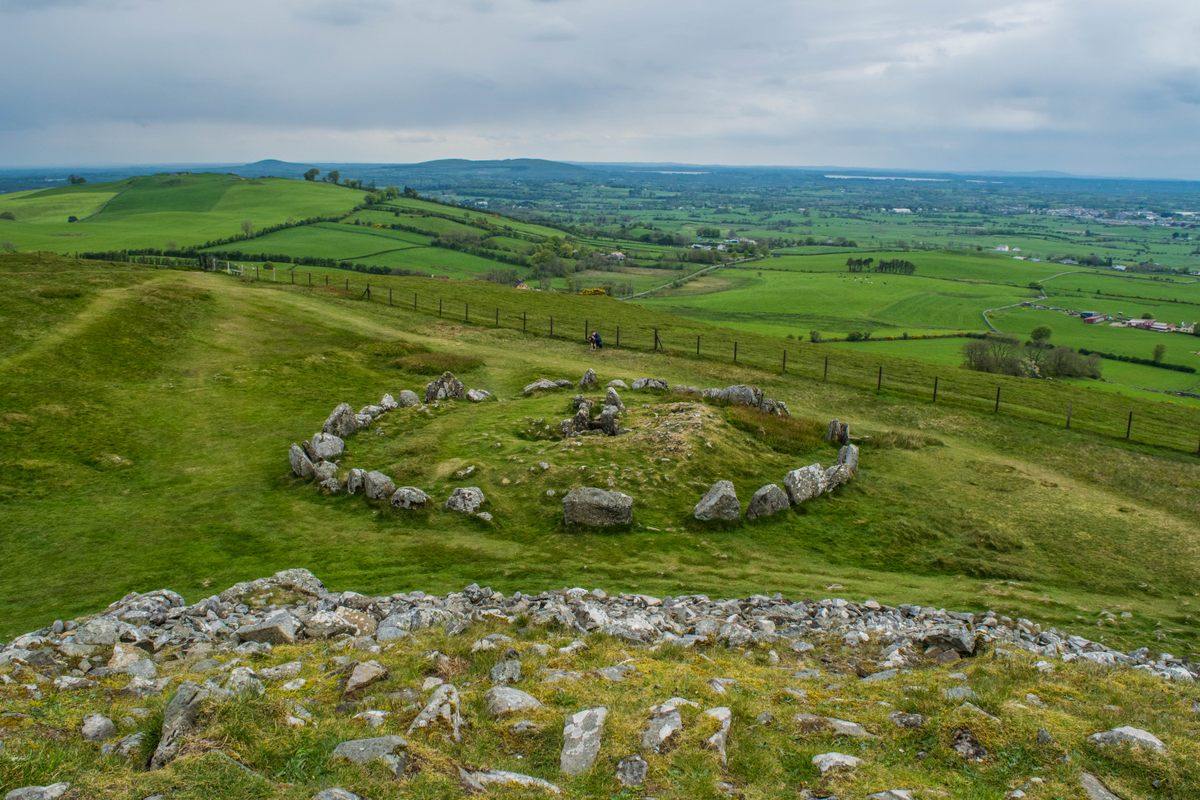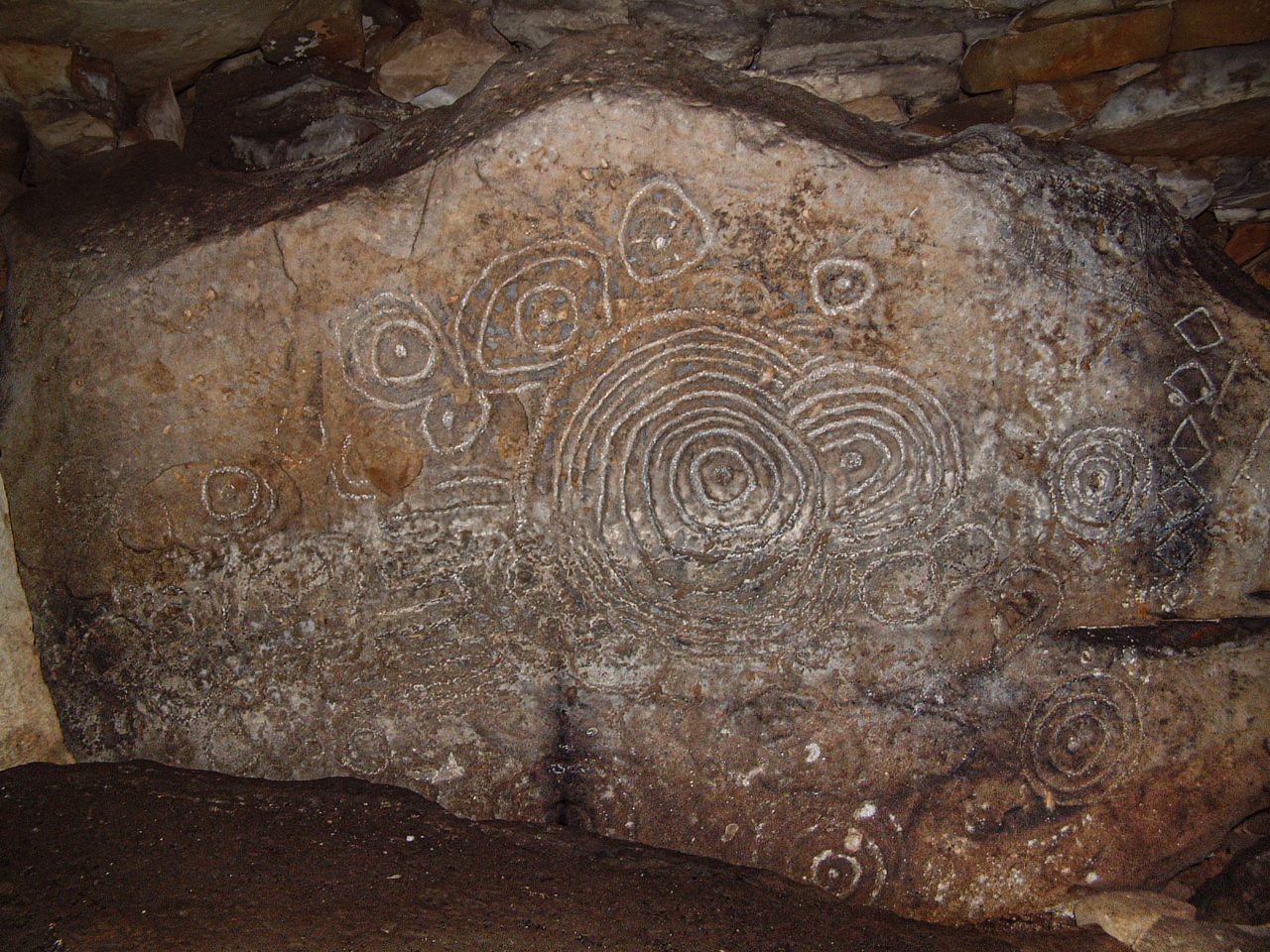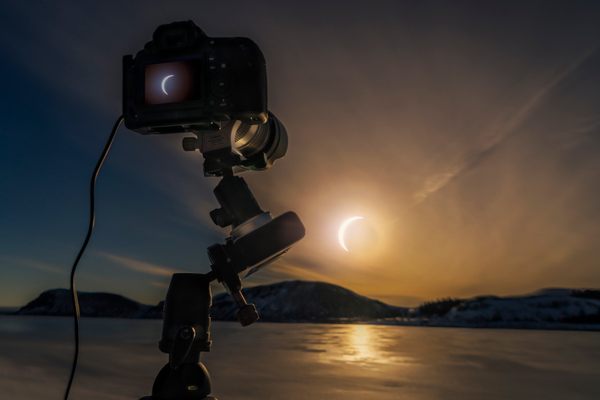Is This the World’s Oldest Eclipse Art?
There’s something shady about the idea that an ancient rock carving on a Neolithic tomb in Ireland depicts the Moon blotting out the Sun.
About 20 years ago, according to several media accounts, a man named Paul Griffin was struck by enigmatic carvings inside a 5000-year-old tomb at Loughcrew in County Meath, Ireland. Griffin—described in the stories as an archaeoastronomer—became convinced that the group of concentric circles, some partially overlapping, depicted an ancient solar eclipse. Using software that calculates the timing of such events, he claimed there was indeed a near-total solar eclipse apparently visible from the site on Nov. 30, 3340 B.C., roughly around the time the tomb was built.
His conclusion, that the carvings represented the oldest record of a solar eclipse, was eventually picked up and repeated by newspapers, websites, and even NASA—which mentioned it twice. Griffin also speculated that charred human remains, found during mid-19th-century excavations of the tomb, were evidence of a human sacrifice linked to the eclipse allegedly depicted on the stone. But there’s something shady about these claims.
The Loughcrew tomb complex is scattered across rolling, patchwork hills. Constructed around 3200-2900 B.C., there are a total of 32 megalithic structures. Elizabeth Shee Twohig, an archaeologist and retired senior lecturer from University College, Cork, says the monuments were likely the burial places of individuals of high status. Several stones within the tombs feature abstract carvings, but it’s the one designated C16, within the tomb known as Cairn L, that has, ahem, eclipsed all others in notoriety.
Frank Prendergast, an archaeoastronomer and emeritus research fellow at the Technological University Dublin, says C16’s carvings are “amongst the premier examples of Neolithic art in Ireland,” but the actual patterns are not that unusual for the period.

In fact, Shee Twohig says concentric circles are the most common design found on Irish Neolithic tombs, and other examples can be found both at Loughcrew and at other sites across the country. This marked lack of distinctiveness is what makes George Washington University anthropologist Susan Johnston, who specializes in Irish prehistory, question the eclipse claim. “I wouldn’t be at all surprised if [Neolithic people] saw an eclipse at some point and were freaked out,” she says. The carvings on C16 are, however, “not particularly unusual, and if somebody is going to record an eclipse, I’m thinking it’s going to stand out.”
Humans—including scientists—instinctively want to interpret what we see, but without additional context, it’s impossible to infer meaning from C16’s abstract artwork. “The idea that you can selectively take a motif and then say it is depicting an event is mistaken,” Prendergast says.
Brown University history of astronomy professor John Steele agrees, cautioning against projecting our 21st-century behavior onto “Neolithic people who might have had a completely different way of interacting with the night sky.”
Johnston lists a number of possible interpretations, none more likely than the next based on the available information. “Maybe it’s an eclipse. Or maybe it’s some mythological thing and we have absolutely no idea what it was because [the] mythology is long gone. Or maybe it’s some social thing. I could go on all day about what it could possibly represent… There’s no way to know,” she says. It is even possible that the art was intended not for the viewer outside the tomb, but for the dead interred within, or that the act of creating the art—“something that is quintessentially human,” she says— was more important than what it depicted.

The charred remains that Griffin boldly linked to human sacrifice are also not uncommon in Ireland’s Neolithic tombs, and their specific location within the Cairn L tomb—noted by Griffin as significant—is not unusual.
Perhaps the biggest hole in Griffin’s theory is the date of the ancient eclipse that coincided, more or less, with the tomb’s construction. Earth’s rate of rotation fluctuates just enough over time to make calculating the path of totality for prehistoric eclipses imprecise. In fact, even programs designed to make those calculations can only do so reliably about as far back as the eighth century B.C. Steele says.
“We can’t just calculate back to 3000 B.C. and say that such-and-such an eclipse was visible in a certain place,” he adds. “The 3340 B.C. eclipse might not have been visible in Ireland at all.”
Griffin’s notions around what the C16 stone depicted were not the first time that ideas around the Cairn L tomb courted controversy. In the 1980s, the late author Martin Brennan noted that the tomb’s builders had constructed it so that the Sun illuminated its inner chamber on Samhain and Imbolc, two important dates in the traditional Celtic calendar. Prendergast, who has studied the site, notes that the two periods during the year when the chamber is illuminated each last about five weeks, making it unlikely that either is associated with any particular single day. Instead, he says, it may be that the periods of the Sun piercing the inner chamber are “symbolic, associated with the funerary purpose of the structure and the spirits of the interred dead.”
As for Griffin’s ideas, they were apparently never subjected to peer review, and the man himself could not be located for comment. It’s unlikely we will ever know what C16’s carvings represent, and what, if any, significance Cairn L’s alignment had. However, there is one thing we can say about the people who created them, says Johnston: “I have no doubt [they] were watching the sky far more than we ever do.”




























Follow us on Twitter to get the latest on the world's hidden wonders.
Like us on Facebook to get the latest on the world's hidden wonders.
Follow us on Twitter Like us on Facebook